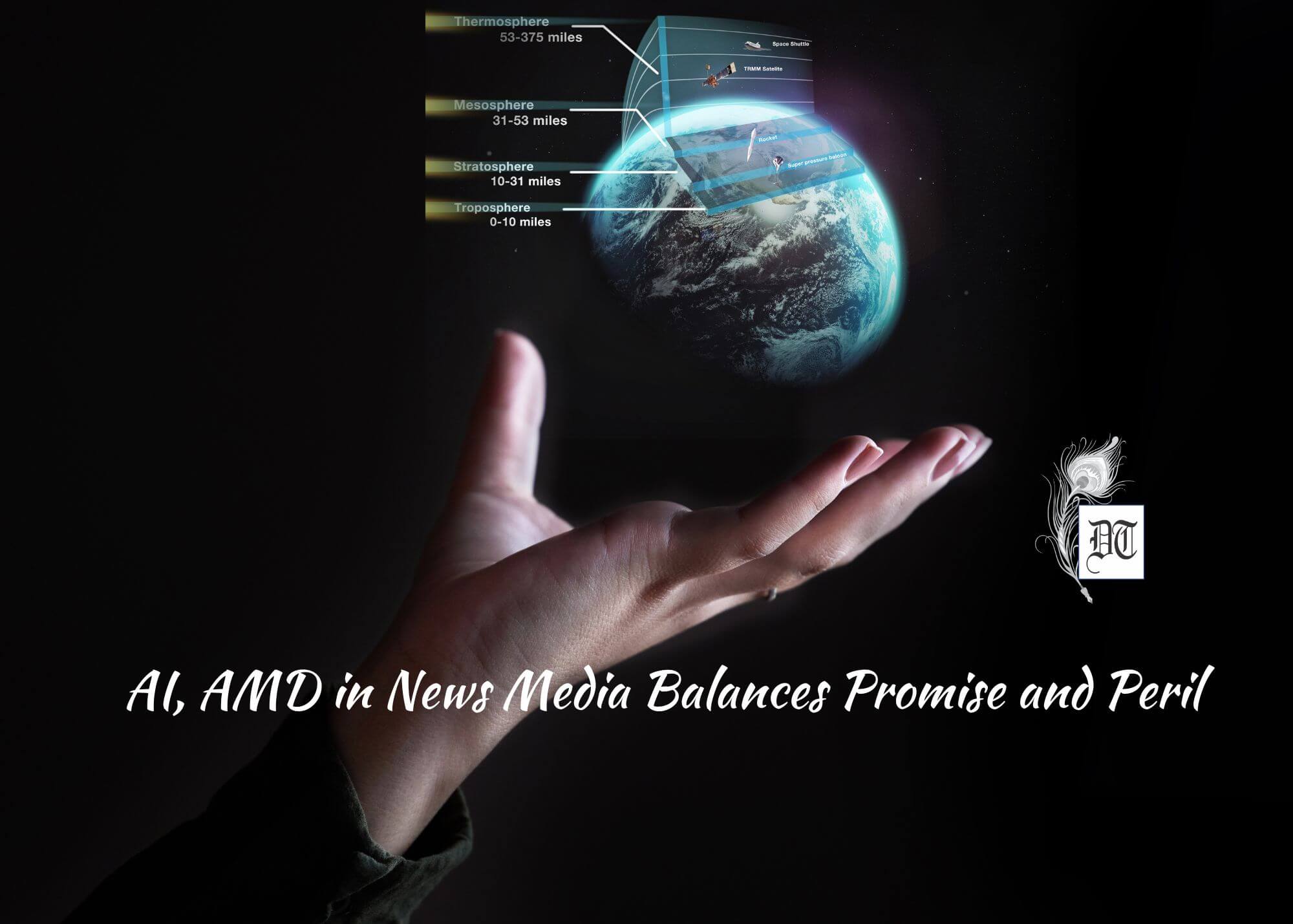Reading Time: 4 minutes
AI and ADM in news media offer personalised content, faster delivery, and deeper insights. But Arindam warns against blind optimism, highlighting potential misinformation and algorithmic bias, exclusively for Different Truths.


AI and ADM are transforming the news. But at what cost? This discussion dives into the double-edged sword of these technologies, exploring how they bring both unprecedented opportunities and thorny challenges. In the face of lightning-fast misinformation and the subtle spectre of algorithmic bias, journalism must tread a careful path.
This analysis lays bare the emerging risks: weaponised misinformation, discriminatory algorithms, the erosion of human oversight, and the looming shadow of job displacement. But it doesn’t stop at warnings. It shines a light on solutions from leading experts, proposing a roadmap for responsible integration. Increased transparency, human-centred design, diverse AI development, and unwavering investment in research and education – are the keys to unlocking AI’s potential for good.
The landscape of news hangs in the balance, poised to be reshaped by AI and ADM.
Ultimately, this is a call to action. The landscape of news hangs in the balance, poised to be reshaped by AI and ADM. Can we navigate the pitfalls and harness the promise? Will journalism emerge stronger, more informed, and more equitable? The answer lies in collaboration, courage, and an unwavering commitment to ethical practices.
Emerging Challenges and Risks
Misinformation and Disinformation: The rapid dissemination of fake news and manipulated content poses a significant challenge to the credibility of news sources and undermines public trust (Vos, 2018). The ease and speed with which misinformation spreads highlight the need for robust mechanisms to verify and authenticate information in the digital age.
Algorithmic Bias and Discrimination: Unconscious biases embedded in algorithms can lead to the unfair treatment of certain groups or individuals, contributing to algorithmic bias and discrimination (Eubanks, 2018). This issue raises ethical concerns about the potential reinforcement of existing societal biases within AI systems.
Loss of Human Oversight and Accountability: Overreliance on automation in the news and media industry risks eroding editorial judgment and accountability mechanisms (Gillespie, 2014). The absence of human oversight may lead to ethical and legal issues, emphasising the importance of maintaining a balance between automation and human intervention.
The rise of AI journalism has sparked concerns about potential job losses for journalists…
Job Displacement and Changing Nature of Journalism: The rise of AI journalism has sparked concerns about potential job losses for journalists and a subsequent decline in the quality of reporting (Singer & Walker, 2020). As machines take on certain aspects of journalistic tasks, the industry faces challenges in adapting to the changing nature of journalism and preserving the essential human elements in storytelling.
Navigating the Challenges: Recommendations and Solutions
Increased Transparency and Explainability: To mitigate challenges related to misinformation and algorithmic bias, there is a need for increased transparency and explainability in AI systems. Developers and users should openly communicate how AI systems operate and be able to explain their decisions, especially in high-stakes situations (Mittelstadt et al., 2019).
Focus on Human-Cantered Design and Collaboration: A pivotal approach to addressing challenges is to view AI as a tool that augments human expertise rather than replacing it. Emphasizing human-centred design principles and fostering collaboration between humans and machines can result in more ethical and effective outcomes (Friedman & Hendry, 2019).
… the teams designing and deploying AI systems must reflect the diversity of the populations they impact.
Diversity and Inclusion in AI Development: To counteract algorithmic bias, the teams designing and deploying AI systems must reflect the diversity of the populations they impact. Diverse teams can bring different perspectives to the development process, helping to identify and mitigate biases, and ensuring fair outcomes (Prabhu et al., 2022).
Investment in Research and Education: Continuous research is imperative to develop responsible and ethical AI algorithms. Simultaneously, public education plays a vital role in raising awareness of the challenges and opportunities associated with ADM in news and media (Nguyen et al., 2023). By investing in research and education, the industry can stay ahead of emerging issues and proactively address ethical considerations.
Conclusion
In conclusion, the integration of AI and ADM in news and media heralds a transformative era with both promise and challenges. Addressing the risks posed by misinformation, algorithmic bias, loss of human oversight, and job displacement requires a multifaceted approach. By embracing increased transparency, human-centred design, diversity in AI development, and ongoing research and education, the industry can harness the potential of AI to create a more informed, equitable, and responsible future for news and media. It is through collaborative efforts and a commitment to ethical practices that the industry can navigate these challenges and unlock the full potential of AI in shaping the future of journalism.
References:
1. Vos, T. P. (2018). “Misinformation, disinformation, and fake news in a social media world.” In M. J. C. Raupp, P. M. O. Silva, & T. P. Vos (Eds.), Disinformation and Fake News: Concepts, Analyses, and Ethical Implications (pp. 1-14). Springer.
2. Eubanks, V. (2018). “Automating Inequality: How High-Tech Tools Profile, Police, and Punish the Poor.” St. Martin’s Press.
3. Gillespie, T. (2014). “The Relevance of Algorithms.” In T. Gillespie, P. J. Boczkowski, & K. A. Foot (Eds.), Media Technologies: Essays on Communication, Materiality, and Society (pp. 167-194). MIT Press.
4. Singer, P., & Walker, M. (2020). “The Future of AI in Journalism: 10 Recommendations for Expanding and Enhancing Expertise in Newsrooms.” Data Society Research Institute.
5. Mittelstadt, B., Allo, P., Taddeo, M., Wachter, S., & Floridi, L. (2019). “The Ethics of Algorithms: Mapping the Debate.” Big Data & Society, 6(2), 1-21.
6. Friedman, B., & Hendry, D. G. (2019). “Value Sensitive Design: Shaping Technology with Moral Imagination.” MIT Press.
7. Prabhu, V., Birhane, A., & Anderson, T. (2022). “Addressing Bias in AI: A Survey on Diversity and Fairness.” arXiv preprint arXiv:2201.02184.
8. Nguyen, D., et al. (2023). “AI and Automated Decision-Making in News and Media: Key Technologies and Emerging Challenges.” ARC Centre of Excellence for Automated Decision-Making and Society.
Picture design by Anumita Roy














